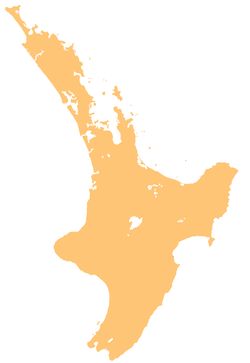Waipiro Bay Waipiro (Māori) | |
|---|---|
 | |
| Coordinates: 38°1′10″S178°19′59″E / 38.01944°S 178.33306°E | |
| Country | New Zealand |
| Region | Gisborne Region |
| Ward | Waiapu |
| Electorate | East Coast |
| Government | |
| • MP | Anne Tolley (National) |
| • Mayor | Rehette Stoltz |
| Population | |
• Estimate (2011) | 96 (20 families) |
| Time zone | UTC+12 (NZST) |
| • Summer (DST) | UTC+13 (NZDT) |
| Postcode | 4079 |
| Area code | 06 |
Waipiro Bay is a small coastal settlement in the Gisborne District on the East Coast of the North Island of New Zealand. The name also refers to the bay that the settlement is built on. It was named Waipiro by Chief Paoa, which translates literally to "putrid water", referring to the area's sulfuric properties. [1] It is in the Waiapu ward, along with nearby towns Te Puia Springs, Tokomaru Bay, and Ruatoria. [3] It is located 15 km (9 mi) south of Ruatoria, 77 km (48 mi) north-east of Gisborne, and 41 km (25 mi) south-west of the East Cape Lighthouse, the easternmost point of mainland New Zealand. [4] By road, it is 103 km (64 mi) from Gisborne, and 231 km (144 mi) from Ōpōtiki. [5] Waipiro Bay is governed by the Gisborne District Council, and is in the East Coast electorate.
Contents
At its peak in the 1900s to 1920s, Waipiro Bay was the largest town on the East Coast, with a population of up to 10,000 people. [1] [2] The town's size greatly diminished after a road was built bypassing the bay in the late 1920s, and as of 2011, there were only about 96 people (20 families) still living there. [1] [2]
During a predetermined season, the Gisborne District Council permits freedom camping in certain areas of the bay, which boasts good surfing, fishing and diving. [5] Te Ara - the Encyclopedia of New Zealand calls Waipiro Bay "one of the most scenic of the coast localities". [2]
